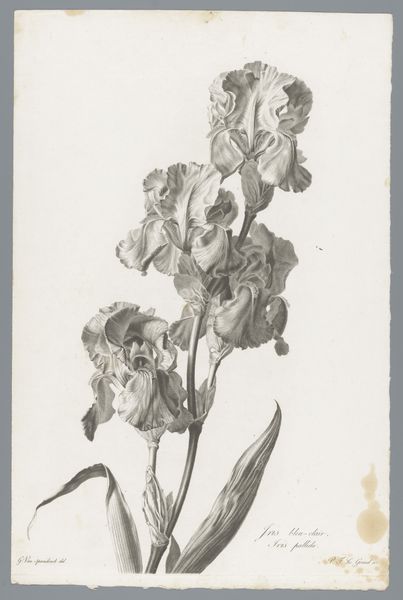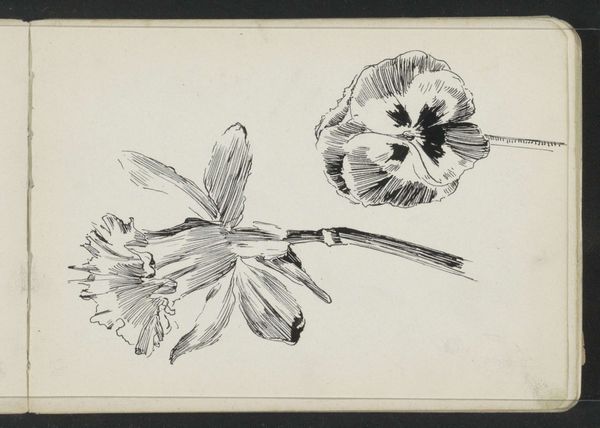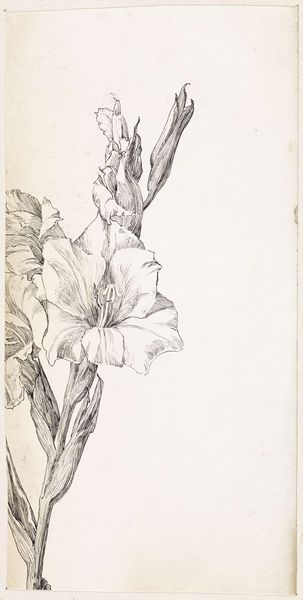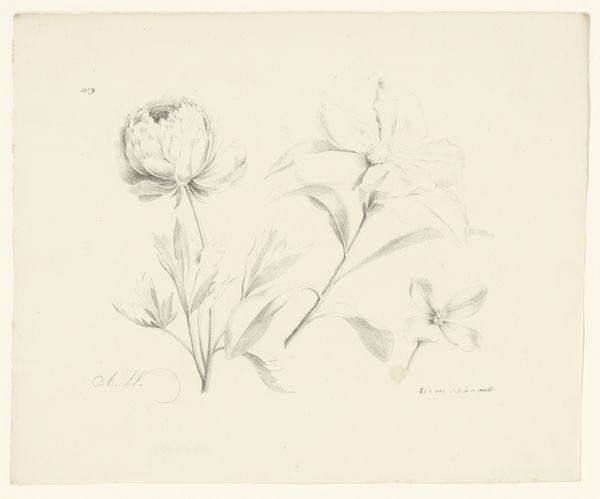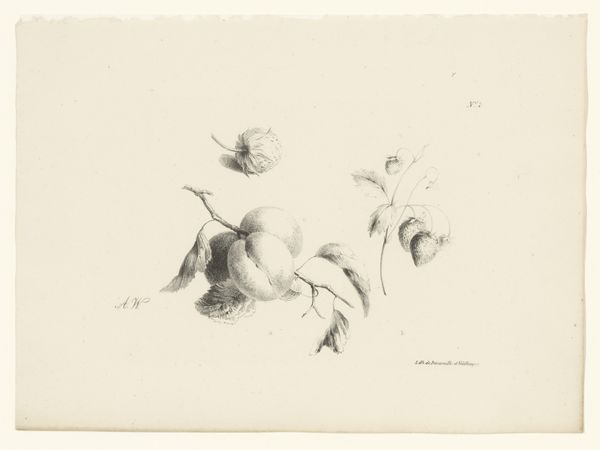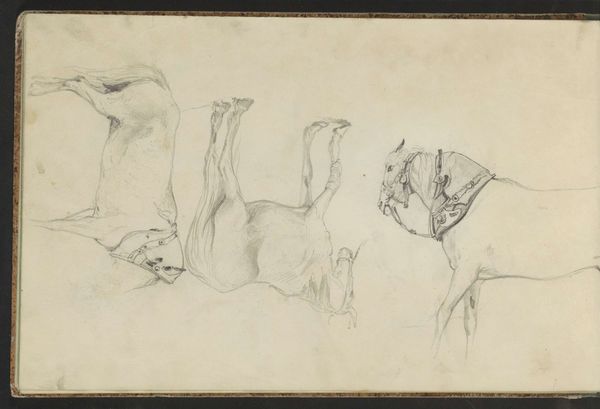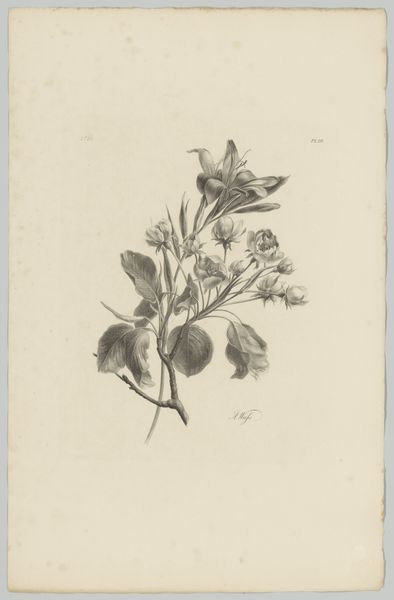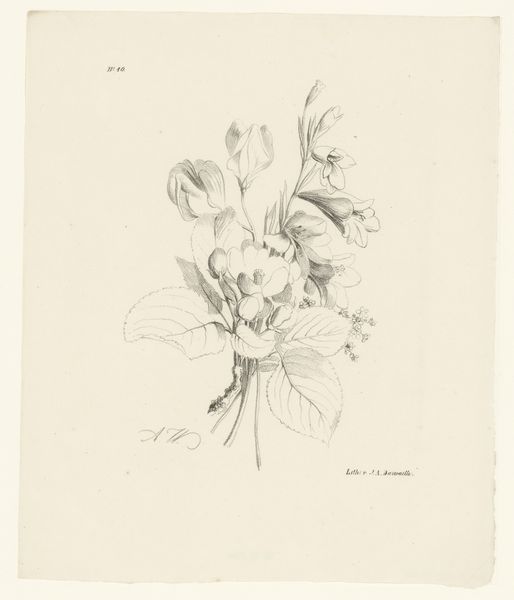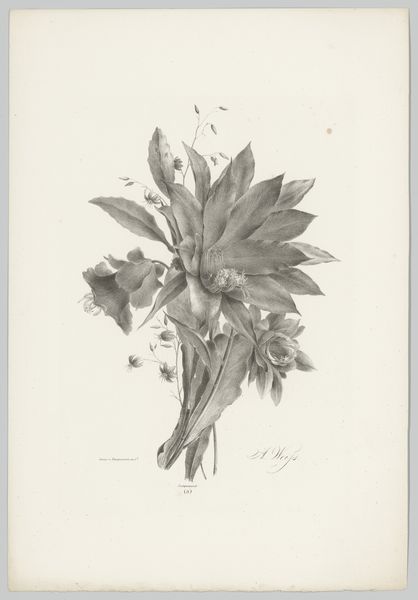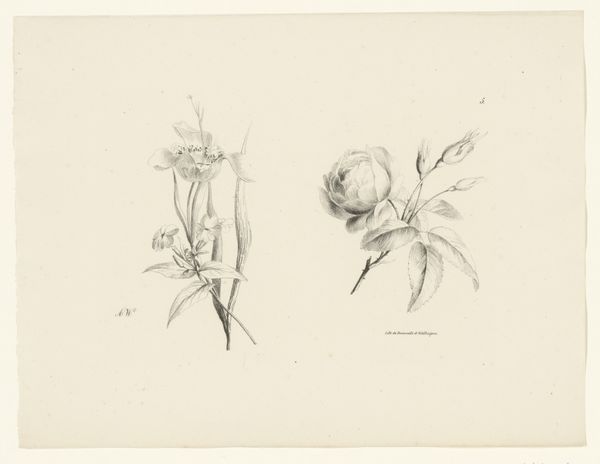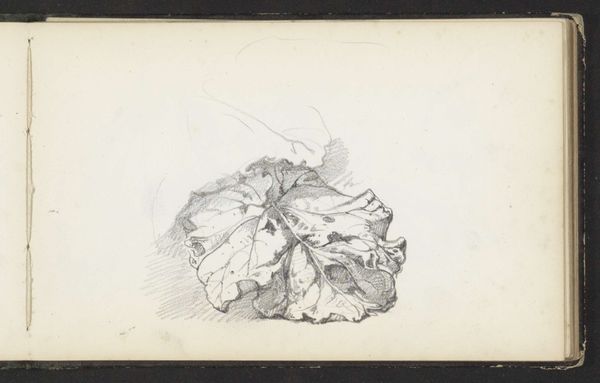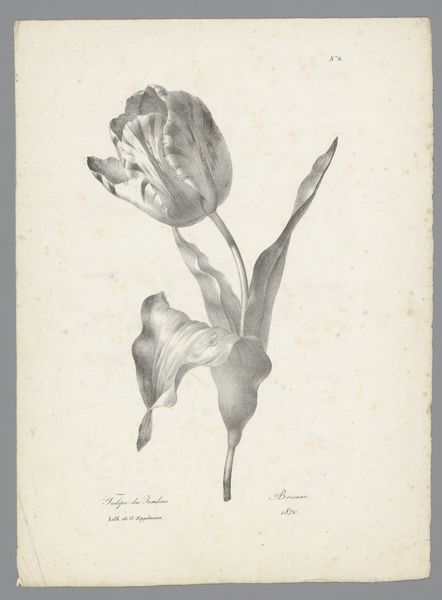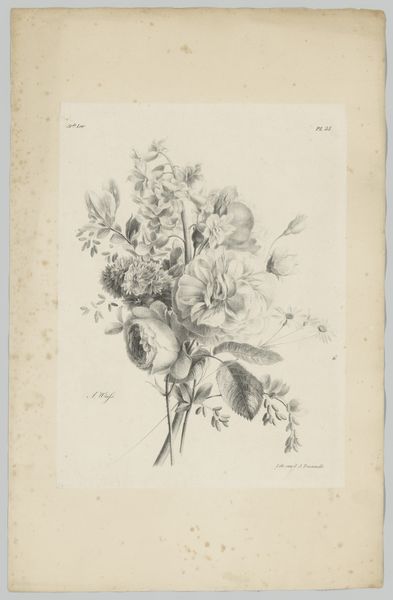
drawing, pencil
#
drawing
#
pencil sketch
#
form
#
pencil
#
line
#
realism
Dimensions: height 115 mm, width 160 mm
Copyright: Rijks Museum: Open Domain
Curator: Up next, we have a delicate study executed in pencil: "Twee rozen," or "Two Roses," by Willem Cornelis Rip, likely created between 1914 and 1916. Editor: They seem to be blushing. They’re bent down a bit. Almost sad, you know? I like how vulnerable they appear. Curator: Observe the nuanced tonal gradations Rip achieves. He harnesses the very properties of the pencil medium to simulate volume and form. There's an emphasis on line that defines the perimeters of the petals, setting the negative space. Editor: True. The detail is incredible considering it’s just pencil! And there is such care taken, with how those petals curl slightly. I mean, are they on the verge of opening, or of drooping closed? Is that a subtle commentary, perhaps? A beginning or an end? Curator: One could extrapolate that interpretation. Structurally, the contrast of light and shadow, that carefully constructed chiaroscuro, accentuates their almost architectural build. It seems less a portrait of flora than a study of forms that merely uses flowers as subjects. Editor: Perhaps, or perhaps Rip sees the underlying form in nature, and wants to share it with us through the intimate process of sketching. The linear qualities suggest he wants to show their essence, that purity. It’s not about being strictly representational, you know? Curator: An astute point. His realism isn't photographic, of course, but focuses instead on representing form with accuracy of observation, yet there’s a subjective quality, as you highlight. Editor: Exactly. Looking at the paper and noticing those small smudges there to the side, that it’s a preliminary sketch makes them so much more poignant to me. It is such a vulnerable medium. A raw, personal encounter with the world. Curator: An engaging summation. Considering Rip’s facility with this common material, this "Two Roses" offers an exemplary case study on line, form, and light in rendering natural subjects. Editor: It leaves you pondering about the hidden layers of everyday beauty—fleeting, simple, yet powerfully expressive, don’t you think?
Comments
No comments
Be the first to comment and join the conversation on the ultimate creative platform.
